Past
A Glimpse of Light, Gaze upon Nowhere
언젠가의, 그곳에 빛이 비추고
2022.11.10 - 30
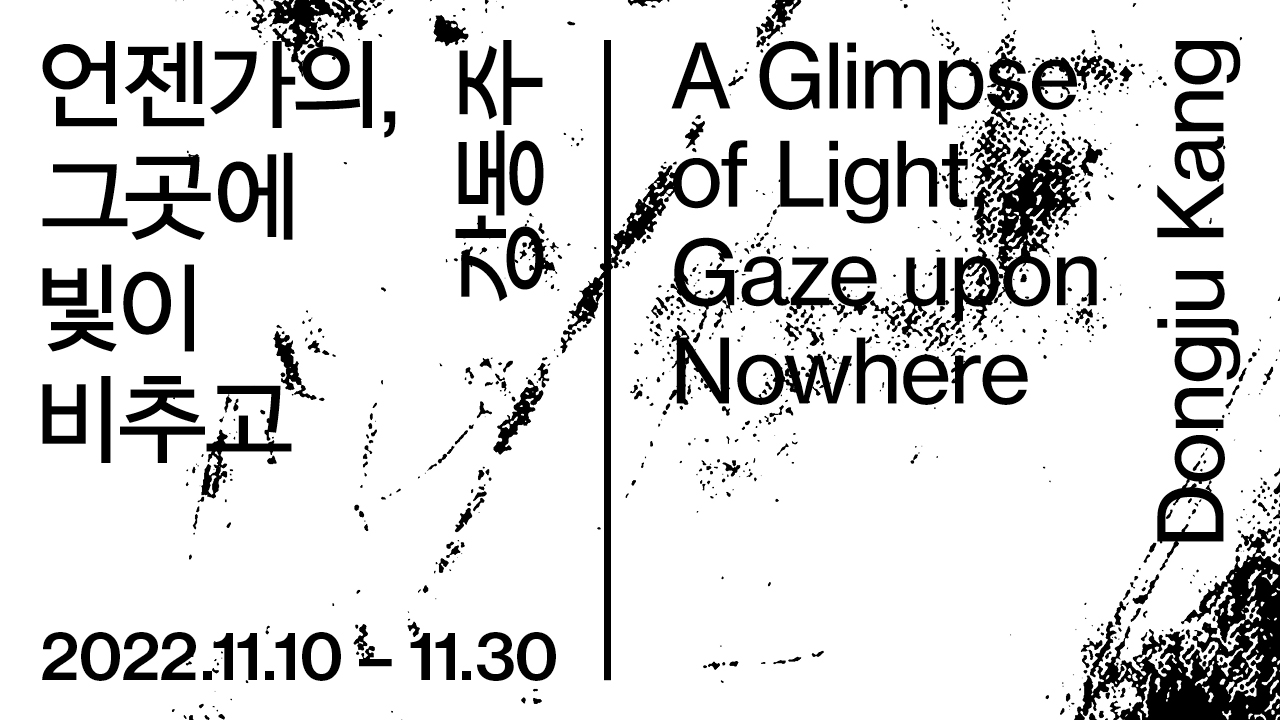
시공간의 가시화: 발생하는 존재
강동주의 드로잉에는 시공간의 스케일 속 발생하는 ‘무엇’을 모색해 나가는 리얼리티가 있다. 이야기에 앞서 그 ‘무엇’과 ‘리얼리티’의 정의에 대한 섣부른 속단보다 그것이 발생시키는 현상에 기대로 이 전시의 청자(聽者)가 동참하기를 희망한다. 강동주의 개인전 <언젠가의, 그곳에 빛이 비추고>는 그 ‘리얼리티’를 발견해 나가는 과정에서 목도된 빛에 관한 실천적 서사이다.
사진: 관계의 존재적 지향성
그간 작가가 주요하게 다뤄왔던 빛과 어둠, 그것에 따른 장소, 수집, 수행에 이르는 탐구는 종래 추상에 이르는 변모를 필연적으로 품고 있었다. 하지만 이번 전시는 사진, 곧 고정된 이미지의 등장으로 작가의 지난 작업물들과는 사뭇 다른 변화를 목도할 수 있다. 불가항력으로 우리 모두가 경험한 지난한 역병의 시간. 작가가 어느 날 불쑥 부모님으로부터 전달받은 막연한 풍경의 이미지들은 언제 혹은 어디인지 모를 시간을 공유했다. 그렇게 발생한 시간의 사건이자 기록은 문득 가족으로부터 보내온 풍경과 하늘 사진으로 도착했다. 이 하나의 관계는 사진이라는 형식을 통해서 예감해볼 수 있는 소통이자, 전적인 지향성으로 구조화할 수 없는 관계이다. 사진의 흔적과 작가가 거닐었던 땅의 기록을 한 화면에 담은 신작 연작은 사진적 접근으로부터 진화한 매개 되는 빛의 성질에 주목해서 살펴볼 수 있다.
이 작업은 사진의 표면을 종이에 전사하는 방식을 사용했는데 출력한 사진의 표면에 프레스기로 압착한 과정을 통했다. 시일이 지나 정보가 소거된 사진표면이 전사된 종이 곁에는 특정할 수 없는 장소, 그 땅의 질감이 먹지와 목탄가루를 이용해 새겨졌다. 이러한 프레스 과정은 일련의 판화 기법으로 보편적으로 인식되는 드로잉 방법론에 위계를 해체한다. 이는 곧 작가의 전지적인 정서의 높낮이를 배제하고 이미지들이 각자의 순간으로 몰입해 나가는 방식을 취한다. 결국 관계를 통해 전해진 이미지의 진화는 관계 지향적인 방식을 통해 형식화되어 나간다.
인류 최초로 사진을 찍은 프랑스의 발명가 조제프 니세포르 니에프스(Joseph Nicephore Niepce)는 사진술의 시작을 알렸는데 18세기 초 장장 8시간 이상의 노출시간, 곧 빛이 들어오는 시간을 기록하여 최초의 사진 이미지를 구현했다. 당시 기술 부족으로 현재 그 사진 이미지가 어떤 특정 풍경에서 기인한 것인지 여전히 모호하지만 내가 주목하고자 하는 점은 니에프스가 빛을 물질화 하는 과정에 있다.
빛과 밀접한 사진의 전사과정은 마치 이미지가 공간을 옮겨가는 것과 흡사하다. 나아가 사진의 표면은 그 원본에 고유함을 은연중에 함축하고 있는데 마치 누군가 사진을 전달받았을 때의 인상과 연결된다. 궁극적으로 사진물질이 기록된 이 작업은 기록의 직접성을 배재한 사진 이미지와 불특정한 장소에 땅의 이미지로부터 또 다른 존재적 관계를 지속한다.
창: 응축하는 빛의 기록
강동주는 이번 전시에서 아직 물질화되지 않은 시간을 형상화했다. 실제로 작가가 오랜 시간을 보냈던 공간 속 창문의 흔적을 드로잉 재료로 본떠 제작한 신작 연작은 창에 먹지를 대고 압력을 가한 후 먹지의 표면 안료가 떨어져 나가며 드러나는 빛을 형상적으로 구현했다. 작가의 오랜 시간 속 역사가 축적된 작업실, 집, 등지에서 발견된 창은 하나의 몸이 되어 그 위에 드로잉 먹지와 종이를 덧댄 후 작가가 밀어내는 힘, 마치 아날로그식의 프레스를 통해 그 실체를 나타낸다.
각기 다른 공간 속 창 위에 켜켜이 축적된 먼지와 흔적은 비단 물리적인 시간뿐만 아니라 먹지를 대고 표면을 누르는 신체의 압력, 곧 작가의 몸이 생성하는 힘의 방향과 연결, 창의 몸이 마치 존재가 되어 스스로를 드러내게 된다. 실제로 하나의 창 위, 표면에 압력을 가할 때 먹지는 그 표면의 유격에 따라 안료가 떨어지고 이를 통해 희미하게 드러난 걸러진 볕은 ‘하나의 형상으로써 빛’이 된다. 이 이미지의 추상성은 우리가 막연하게 그려왔던 빛의 이미지를 작가의 수행을 통해 구체적으로 나타난다.
이 지난한 제작과정은 헤아릴 수 없는 빛의 내면을 견고하게 하며 빛의 내적 이미지를 상상시킨다. 동시에 우리가 익숙하리라 여겼던 일상 공간에서 누적된 시간을 유형화(typological image)한다. 수십 년간 창문에 켜켜이 쌓인 과거로부터 지금에 이르는 시간은 종래 하나의 풍경을 지닌 지형(topography)으로 드러난다.
그린다는 것은 때론 미래를 향해 어떤 구체적인 계획을 이루는 비유적인 표현으로 사용되기도 한다. 이렇듯 우리가 손으로 쥐고자 했던 물리적 형태가 이끌어낸 정신적 가치는 무엇인지 전해진 이미지들 너머로 생각해 본다. -작가 강동주
실로 그간 작가가 몰두해왔던 드로잉 형식에서 판화의 고유한 방법론을 통해 타진해온 이 형식은 일종의 번안이자 아직 실현되지 않은 장소의 잠재성을 창을 통해 보고자 했던 시간의 기술이다. 이 보이지 않는 시간에 대한 복원 과정은 지나감을 증거하지만 동시에 아직 닿지 않은 미래를 곧, 대상의 너머를 향한다.
19세기 초 현상학의 권위자이자 프랑스의 철학자 엠마뉴엘 레비나스는 “시간은 주체가 홀로 외롭게 경험하는 사실이 아니라 타자와의 관계 자체이다.”라 언급했다.¹ 우연히 마주한 주변의 존재 들을 통해 작가가 전해 받은 풍경의 조각은 사진이미지가 본래 어디에서 찍혔는지에 대한 일종의 목적성을 소멸한다. 동시에 이를 전달받는 이로 하여금 물리적, 정서적으로 측정 불가능한 거리에 서 막연한 공허와 유추 가능한 추억을 발생시킨다.
강동주의 작업은 직관적이고 시적인 태도의 물화과정을 지닌다. 마치 일련의 수행처럼 각기 다른 단계의 제작과정은 드로잉의 고유한 태도를 상기시킨다. 결국 이는 앞서 언급한 ‘리얼리티’가 사실을 재현하는 것이 아니라 그 사실을 피부로 경험해 나가는 그 자체임을 밝히고 나아가 타자와 맺는 공동의 향유임을 가시화한다.
유형의 원리는 추상, 복합, 기능적 성질을 통해 궁극적으로 언어화 되는 인식을 함의한다.² 강동주가 이번 전시 <언젠가의, 그곳에 빛이 비추고>에서 다루어 온 시간적 변화의 관점은 하나의 드로잉 언어체계로 볼 수 있다. 드로잉의 물성이 지닌 태도와 그 태도를 물화 시키는 단계는 마치 하나의 드로잉 언어가 변천해 나가며 체계로서 결합을 구체적인 현상으로 구현한다. 나아가 그 물화의 과정에서 발생하는 필연적인 경험 성질: 일련의 질감(texture), 구성(composition), 방법론적 수행(repeated layers)은 드로잉의 언어가 변화함을 기록하면서도 그 변화를 선험적 혹은 경험적으로 인식될 수 있음을 증거했다. 결국 강동주의 말대로 종래에 남겨진 이미지는 이를 보는 우리에 게 그 지나간 시간, 그곳에 존재한다는 감각으로 남는다.
---------------------------
¹ 시간과 타자, 엠마뉴엘 레비나스, 1947
² 유형의 정의와 인식: Definition der Typen und Erkennen, 조준구, 2007, 한국독어독문학교육학회
글/ 전민경, 독립기획자 (더 그레잇 커미션 대표)
Visualization of Time and Space: Arising Presence
Zoe Chun Independent Curator (Director of The Great Commission)
Kang Dongju, in her drawing works, delivers a reality where she explores particular things that occur within the scale of time and space. The artist would like viewers to join the exhibition anticipating the phenomenon that her works provoke rather than making hasty conclusions about the definition of what things and 'reality' are. Kang's solo exhibition «A Glimpse of Light, Gaze upon nowhere» is a practical narrative about the light witnessed in discovering that 'reality.'
Photography: The Existential Orientation of the Relationship
The artist has mainly engaged with the theme of light and darkness, examining its place, compilation, and presentation, which inevitably harbors a transformation that leads to abstraction. However, with the use of photography (fixed image) in this exhibition, the audience will notice a marked difference from her previous works.
One day during the challenging times of the pandemic, Kang's parents unexpectedly sent her images of vague landscapes, sharing an unknown time and place with her. This event and record of a time that had already taken place came to her as a photograph of the scenery and sky. This relationship is a communication that can be foreseen through photography but cannot be constructed with total orientation.
On one screen, her new series of works contains traces of photographs and records of the land where she once walked daily. From this photographic approach, the results can be viewed by focusing on the evolution of the mediating nature of light.
Kang uses a method of transferring the surface of a photograph onto paper and then compressing the surface of the printed picture using a press. This creates a transcription of the photographic surface, with its information erased over time. Next to it, an unspecified place and the texture of the land are engraved using carbon paper and charcoal powder.
This pressing process breaks down the hierarchy of universally recognized drawing methodology into a series of printmaking techniques. It is a method that excludes the artist's omniscient emotion and allows the images to immerse themselves in their own respective moments. The artist’s innovative technique (transforming a pressed image into a drawing) demonstrates how drawing methods are formalized between material and emotional relationships.
The transcription process of photography, closely related to light, is similar to how an image moves through space. Furthermore, the photograph's surface implicitly implies the uniqueness of the original, which connects to the impression one gets when receiving the picture. Ultimately, the medium of photography is characterized by the direct recording of events, but in Kang's work, photography is seen as an image, excluding the characteristic of documenting/preserving. Instead of a specific land, a close-up drawing image of an unknown land – such as a corner of a sidewalk block– is attached to create another story between the pressed photograph and the drawing.
Window: Record of Condensing Light
In this exhibition, Kang embodies the time which has yet to be materialized. The artist has, in fact, modeled her drawing material after the traces of a window in spaces where she had spent a long time. She expresses the light through the surface pigment of the paper that is revealed as the ink falls off after exerting pressure on the window. The windows in the artist's studio, house, and other places where her long history has piled up, expose their reality and become one body after the artist covers them in ink and paper and pushes with force.
The dust and traces accumulated on the windows in different spaces show physical time and the body's pressure that presses the surface with the carbon paper. The direction and connection of the force generated by Kang's body and the body of the window become a presence and manifest themselves. When pressure is applied to the surface of a window, the pigment from the carbon paper falls according to the cracks of the surface, and the filtered sunlight that is dimly exposed through these cracks becomes ‘light as a form.’ The abstractness of this image is expressed explicitly through the artist's presentation of the idea of light which we have only vaguely understood.
This strenuous work process solidifies the inner side of the immeasurable light and allows the audience to imagine its internal image. Simultaneously, it forms a typological image of the accumulated time in an everyday space we thought would be familiar. The time from the past to the present, racked up on the windows for decades, is shown as topography in a single landscape.
Drawing is sometimes used as a metaphor for making a concrete plan for the future. In this way, we can think beyond the images of the spiritual value of a material form we want to possess. Artist Dongju Kang
The artist has explored the unique methodology of printmaking from the drawing form she has been immersed in. This format is a kind of adaptation and a description of the time that sought to see the potential of a place that has not yet been realized through the window. The restoration process of this invisible time proves that time has indeed passed while it moves beyond the subject to the unreachable future.
Emmanuel Levinas, an early 19th-century French phenomenology authority and philosopher, noted that "time is not a fact that a subject experiences alone, but a relationship with others."
The landscape fragments that the artist had received from her parents destroy any kind of purpose as to where this photograph was taken initially. At the same time, the recipient of the picture cannot, from a distance, physically or emotionally measure the indefinite emptiness and inferred memories.
Kang's work has an intuitive and poetic materialization process. Like acts of self-discipline, the different stages of the work process remind us of the unique attitude of drawing. In the end, this reveals that the aforementioned 'reality' is not a reproduction of a fact but an experience of the fact itself, which further visualizes the shared enjoyment with others.
The principle of Typification implies a cognition that is verbalized through its abstract, complex, and functional properties. The perspective of the change of time which Kang has expressed in the exhibition «A Glimpse of Light, Gaze upon nowhere» can be viewed as a drawing language system.
The attitude possessed by the physical properties of drawing and the step of materializing its perspective is as if one drawing language is transformed, and the combination is revealed as a concrete phenomenon in a system. Moreover, the inevitable experiential properties that occur in the process of materialization – a series of texture, composition, and repeated layers – have demonstrated that change can be deduced from general principles or empirically while recording the change in the language of drawing. In the end, as Kang Dongju said, the image left in the past gives the audience the sense that it does exist in the past.
---------------------------
¹ Le Temps et l’Autre (Time and the Other), Emmanuel Levinas, 1947
² Definition der Typen und Erkennen, Joonku Cho ,2007, Koreanische Gesellsschaft fur Didaktik der deutschen Sprache und Literatur
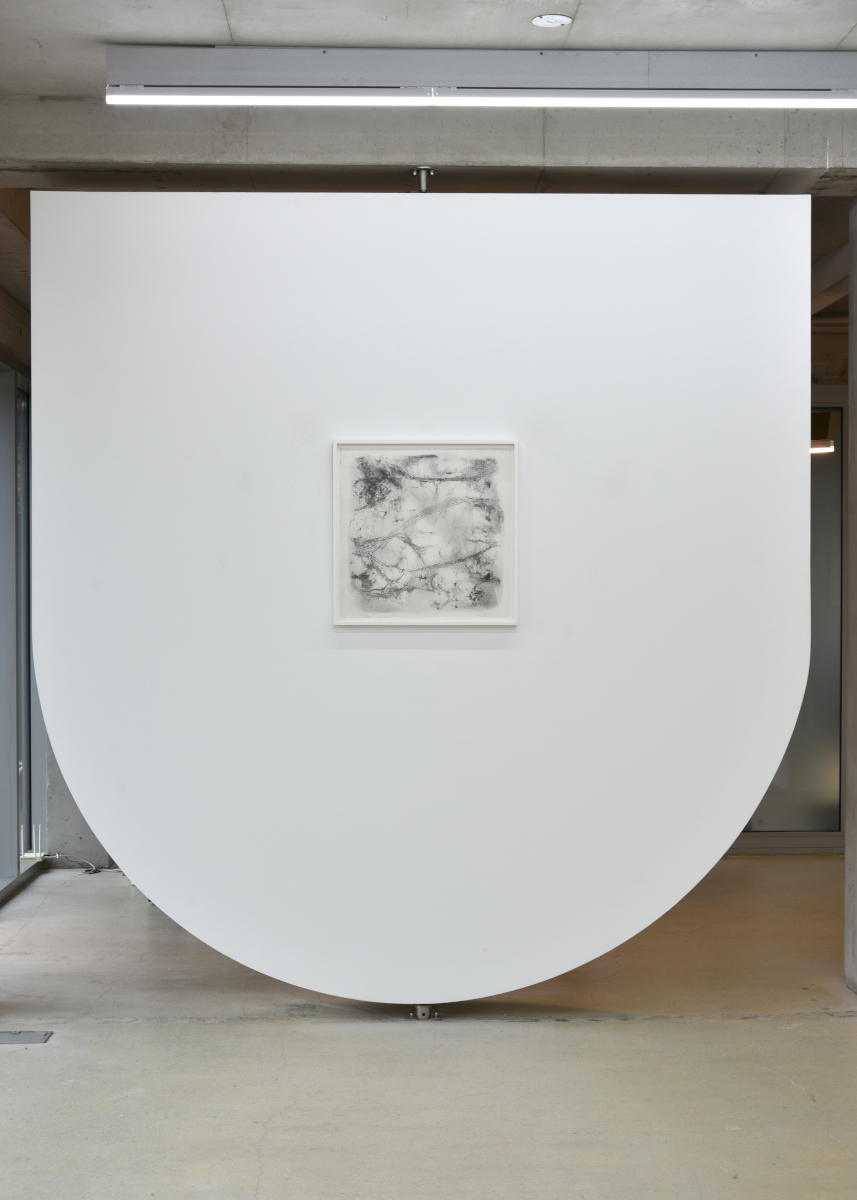
«언젠가의, 그곳에 빛이 비추고» installation view
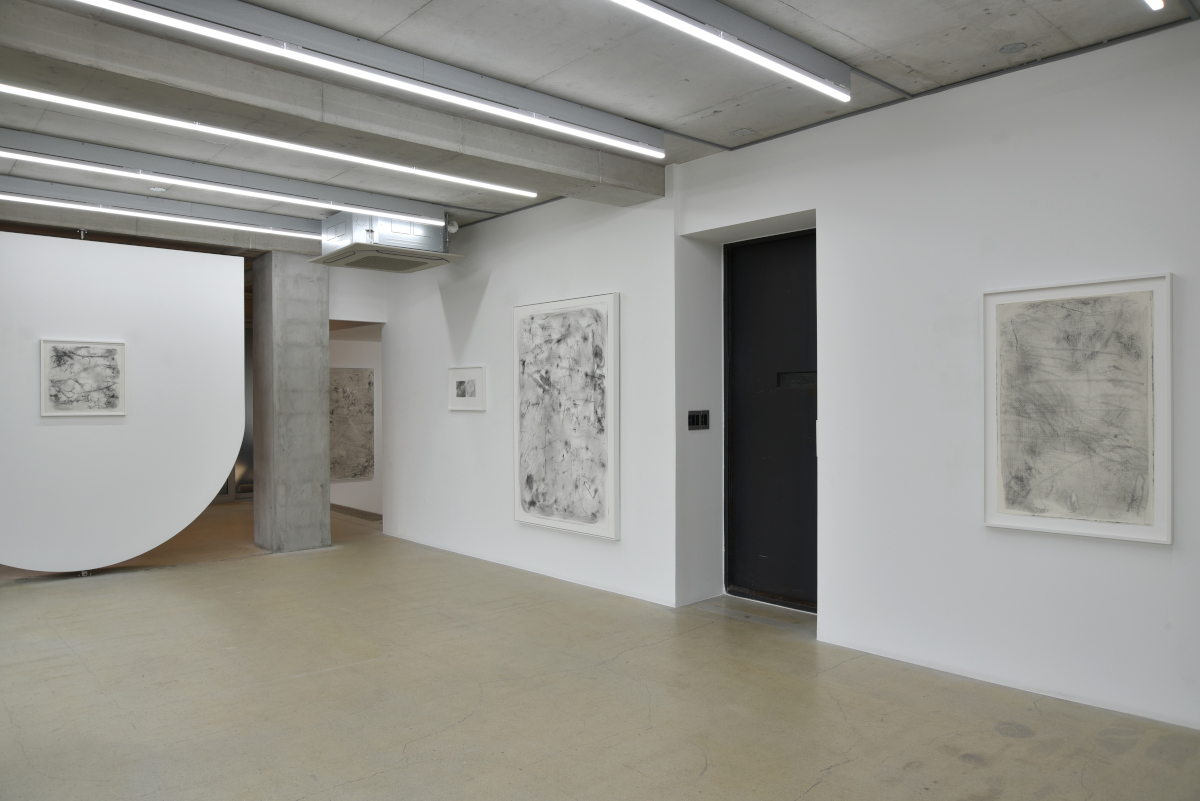
«언젠가의, 그곳에 빛이 비추고» installation view
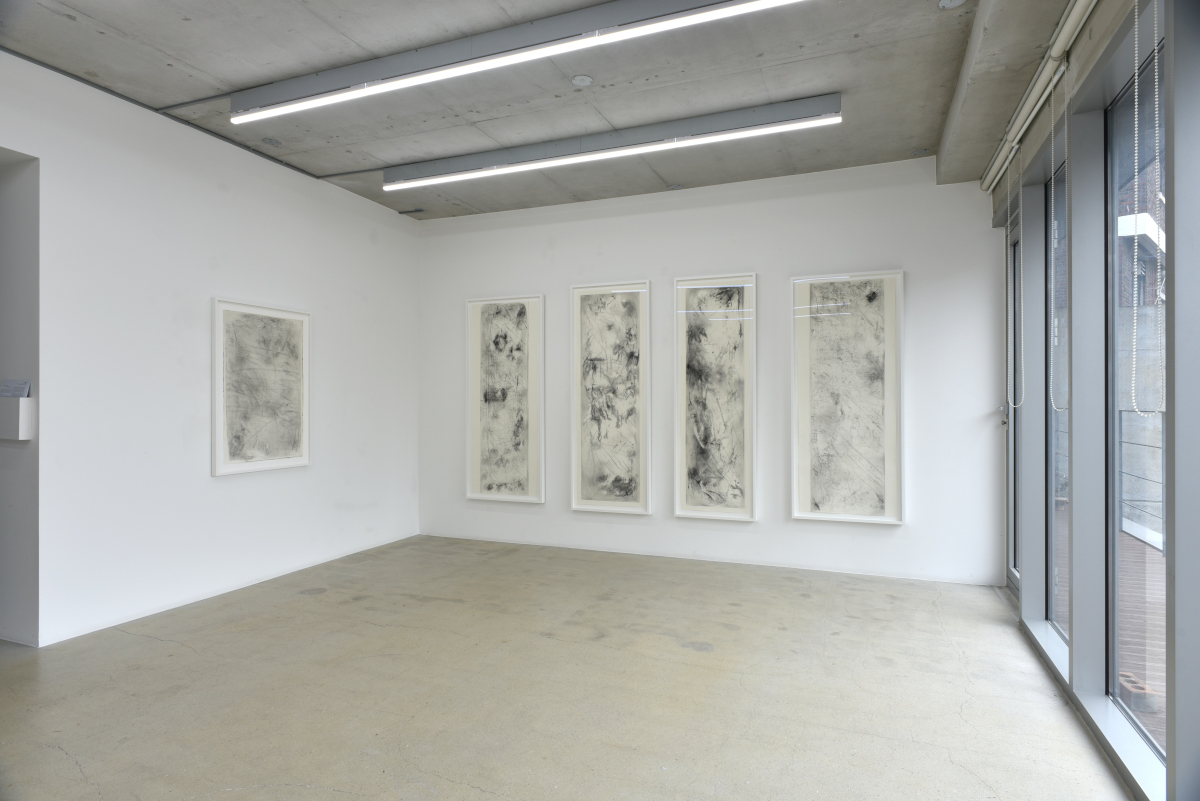
«언젠가의, 그곳에 빛이 비추고» installation view
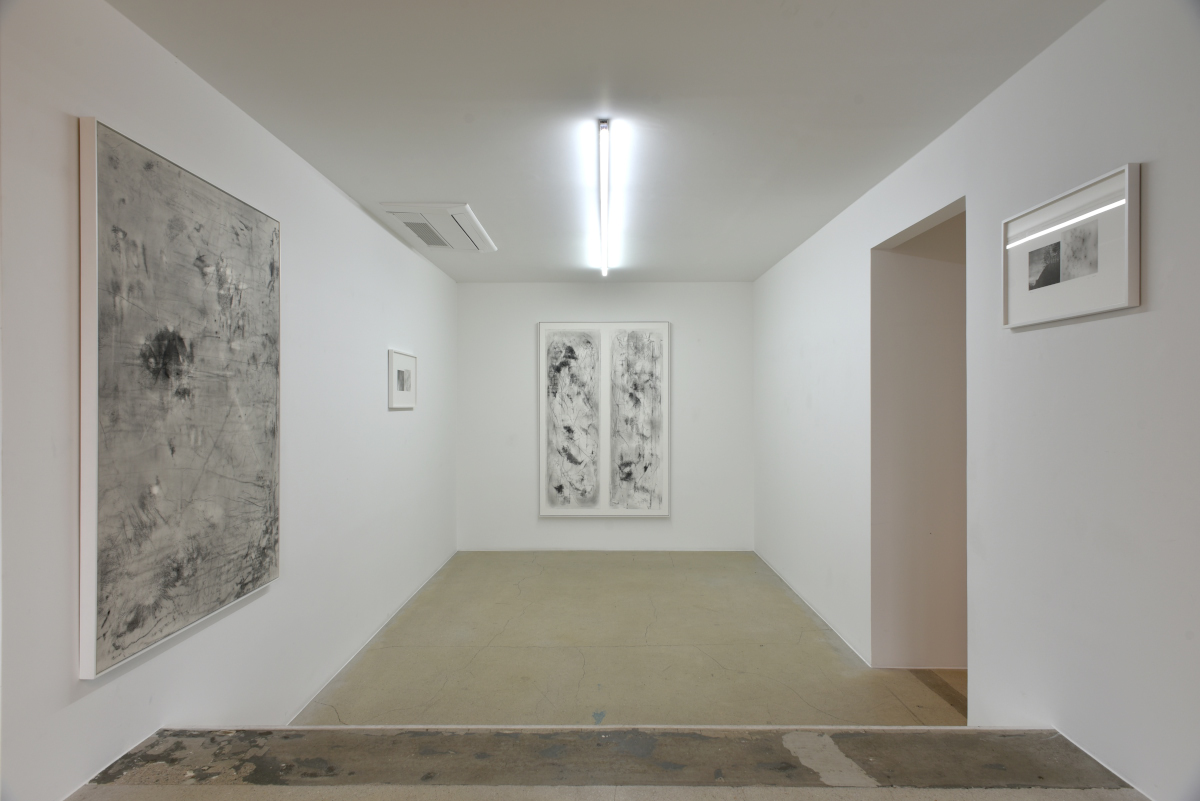
«언젠가의, 그곳에 빛이 비추고» installation view

«언젠가의, 그곳에 빛이 비추고» installation view